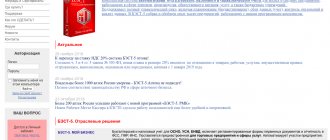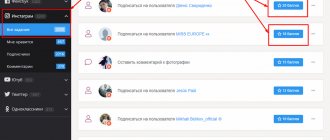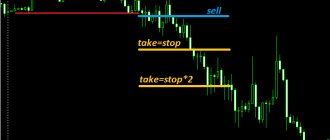Forex currency market - general information
FOREX is an international foreign exchange market. Market for selling, buying and exchanging currencies. The beginning of the existence of Forex in the modern sense is considered to be 1971.
This year a system of floating exchange rates was introduced. Liberation from a fixed exchange rate made it possible to treat the currency “according to the market” - to negotiate a price, bargain and, therefore, make money on the difference in exchange rates.
Advantageous differences between FOREX:
- On the FOREX market, trading takes place 24 hours a day.
- Every day, the foreign exchange market sees the highest volumes of transactions - the amount of dollars to a number with twelve zeros is no longer uncommon. And this is a reliable potential to always find a buyer or seller of currency.
- There is no single center for trading operations - FOREX - it is everywhere and at the same time you will not find the center of the foreign exchange market anywhere. Over-the-counter trading guarantees freedom of market relations.
Forex participants are divided into main camps:
Camp of active participants:
- Central banks
- Commercial banks
- Brokerage firms
Active participants have the opportunity to shape prices on the foreign exchange market.
Passive camp:
- International corporations
- Investment funds
- Firms that carry out foreign trade operations
- Private investors
Passive participants trade according to quotes set by active Forex participants.
Free Forex Course Resources
As a rule, brokers work free of charge for students, with whom the trader will subsequently open an account. In order not to make a mistake with your choice and not to waste your time on irrelevant information, to be able to build competent strategies in the future that will lead to profit, ratings of courses that offer a good level of training for free will help.
- ForexInvestor (https://forex-investor.net) is a popular site that is in the top positions of the Google search engine, offers free training, reveals basic and in-depth concepts of strategies, terms, and calculations. Registered visitors to the portal can receive materials with tips and recommendations.
- A large assortment of educational video courses, which are located at tradelikeapro.ru/obuchenie/, can be studied in real time, downloaded or purchased. The “Forex for Dummies” program, “Transformation of a Trader” - here everyone will find something that will be interesting and educational, and most importantly, useful on the path to high profits.
- https://amarkets.today - offers express training in the intricacies of working with the main products of the Forex market, promising quick results and quick earnings.
Basic terms and concepts
A trader trades on Forex, risking either his own funds or the capital entrusted to management by the investor.
A broker is an organization that, for a fee, undertakes to assist traders in carrying out transactions.
Leverage is provided by the broker to traders so that those making transactions can operate with amounts tens of times higher than the deposit amount. The principle of leverage can be clarified through the concept of “margin” - a percentage of the transaction amount that a trader places in an account with a broker.
For example, the leverage is 1 to 100, then the margin is equal to the percentage. That is, for a transaction of $10,000, it is enough to have only $100 in your account.
The amount that a trader has placed in an account with a broker is called a security deposit ; this amount is the collateral for providing leverage.
If the loss is equal to the size of the security deposit, then all operations are completed immediately.
Arbitration is actions aimed at making a profit when exchange rates change.
There are two types of arbitrage transactions:
- "Purchase and sale" . The principle: buy cheaper in order to sell more expensive.
- "Sale-purchase" . The principle: sell high and then buy cheaper.
The deal includes:
- Opening a position. When opening a position, the trader and broker agree to deliver one currency against the other. From this moment on, price movements affect the trader’s deposit.
- Closing a position . When closing, the trader and broker remove the obligations that were taken when opening the position. This is a fixation of the result. From the moment of closing, price movement does not affect the trader's account.
Rules for successful Forex trading for dummies and more ⚠
To succeed in Forex trading, it is also important to know the special rules . They should not be violated under any circumstances.
Rule 1. Do not violate the trading rules provided for the chosen strategy
On the one hand, strict adherence to the chosen trading strategy cannot guarantee constant profit from trading. On the other hand, this approach will help increase↑ the percentage of successful transactions in general.
Rule 2. Get trained regularly
Any experienced trader will tell you: to succeed in the Forex market, you need to constantly learn. Of course, to work based on a single trading plan, you only need knowledge of the basics of the market, as well as the essence of the chosen strategy.
However, if you want to become a real professional, you cannot do without constantly studying additional information.
Rule 3. Keep your emotions under control
Experts warn: you should not give in to emotions, regardless of the direction of market movement - in the desired or opposite direction. Any excessive emotionality inevitably entails losses. Trading based on strategies requires a cool head from the trader.
The famous trader Alexander Elder claims: many people on the stock exchange are controlled by 2 emotions - fear and greed. Each of them prevents the trader from reasoning sensibly.
Rule 4: Practice Continuously
Daily practice in the Forex market is of great importance when trading. It doesn't matter how much time you spend on it. Regular trading helps to develop a certain trading skill. Without it, it is impossible to become a successful trader.
Experts recommend keeping an electronic trading diary . It is important to enter the following data into it: operations of all transactions, attach graphs of the current situation, record your emotional state.
Rule 5: Engage in risk management
It is imperative to include a rule for setting Stop Loss levels . Before entering the market, it is important to calculate what the loss will be if they are reached.
If the size of the deposit upon closing a transaction decreases↓ by more than 2% , you should not open it.
You should not risk large sums in hopes of making a serious profit. It is much more efficient to deposit additional funds or attract them using the capabilities of PAMM accounts. This approach helps increase profits while maintaining the same level of risk.
Compliance with the rules presented above will help a beginner become a successful trader. Experienced users will be able to increase↑ profits and reduce↓ risks.
Learning to trade on the Forex currency exchange
To trade Forex you need to know only two rules:
- Buy currency when the price has dropped;
- Sell currency when its price has increased.
How does this happen. The trader monitors the movement of market prices by observing the price chart on the monitor.
In order for a trader to have this opportunity, he downloads a platform program from the selected broker, thanks to the platform and can track price movements on the market.
To participate in trading, a trader registers an account with a broker. After registration, the trader gets access to the platform, thanks to which, after replenishing the balance, he can start trading.
To participate in trading, the trader is offered two types of orders: an immediate execution order and a deferred execution order. Orders indicate the amount for which the transaction will be made, the purchase or sale price.
In immediate execution orders, a position is opened immediately as soon as the trader places the order. In deferred execution orders, a position will be opened only when the price reaches the level specified by the trader.
But before you make transactions and place orders, you need to analyze the chart. The price chart can be presented in several types: linear, charts built on the basis of bars, and charts where “Japanese candlesticks” are used instead of bars.
Charts based on “Japanese candlesticks” are considered by most traders to be the most informative. Although there are types of analyzes where it is more convenient to use lines or bars.
On the platforms of any broker there are buttons for switching the chart from one type to another.
To analyze price movements, the platform equips the trader with a special set of tools – indicators. Before using this or that indicator, you should study its properties, and then its use can greatly facilitate the analysis.
Brief summary of the section:
So, a trader opens an account with a broker, downloads the platform to his computer and tops up his balance.
Then, having chosen a particular currency pair to work with, he opens a price chart for this pair and, using graphical analysis and indicators, analyzes the movement of the market price.
Based on the analysis, sets a sell or buy order. You can close an order either manually - at any time, or by setting a specified condition for the order to close the position.
After the position is closed, the result of the transaction is recorded on the deposit: if the forecast is successful, the deposit increases, and if the forecast is unsuccessful, it decreases.
How to make money on Forex?
You can make money on Forex only if the trader undergoes proper training. Over the years of the existence of exchanges and Forex, many laws have been opened that help make reliable forecasts.
In addition, to date, many mathematical indicators have been developed, which are represented on the trading platform as hint lines. The larger the arsenal of indicators a trader owns, the more opportunities he has to make a reliable forecast.
Having studied the laws, a trader turns Forex trading from a game into a job - he consistently earns money.
There is no place for emotions when working - only cold calculation and the highest degree of self-discipline.











